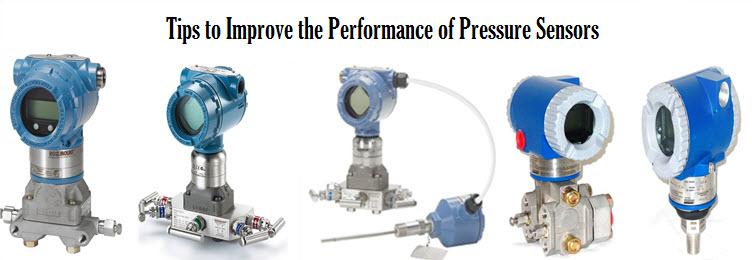Blog
Tips to Improve the Performance of Pressure Sensors
Tips to Improve the Performance of Pressure Sensors
March 19, 2019
Pressure sensors are devices used to measure the pressure of liquids and gases. These devices are also known as pressure transducers or pressure transmitters, and are used for controlling and monitoring pressure in a number of day-to-day applications such as touch screen devices, biomedical instruments, and automobiles. They sense pressure in a liquid or gas, and convert it into an electrical signal. Pressure sensors are a must in most industries where pressure needs to be monitored and maintained on a regular basis. This post offers tips to improve the performance of pressure sensors in your application. It also discusses the factors you should consider when selecting a pressure sensing device.

How to Improve your Pressure Sensor Performance
The performance of a pressure sensing device entirely depends on their utilization in different environments. So, there are various factors you should consider when selecting a pressure sensor. Here is a list of tips which will help you choose the right type:
- Pressure Type: The pressure type you need depends upon your application. Usually there are two broadly classified pressure types- vented and sealed. In case of vented sensors, the pressure is measured by taking atmospheric pressure as a referential value. In sealed sensors, the pressure is measured relative to the sealed reference point.
- Resolution: Usually, the pressure sensor you install will measure pressure within the standard range you require on a day-to-day basis. Hence, the resolution is already set or programmed. However, the resolution will be affected if you go out of your standard pressure range or the one offered by the manufacturer.
- Life Cycle: If you require a pressure sensor to work for a limited period of time in a certain environment, there are many options available in the market. However, if you require the sensor to function continually for years, the options are perhaps limited.
- Measuring Range: This is the defined upper and lower limit of pressure the sensor operates in. This is especially crucial for differential and gauge pressure measurement because if the reference value of the pressure is beyond their range, they will not operate.
- Operating Temperature: For an optimal performance of the pressure sensor, the temperature range needs to be defined, else the output will not be consistent. This is especially common for electronic sensors, which cannot function well in extreme hot or cold weather conditions.
- Pressure Measurement Type: Although there are some sensors, which can function using any pressure measurement method. However, it is important to fix one method depending upon your application, else the values may vary.
- Size and Dimensions: The type and size of the area would help decide the size and dimensions of the pressure sensor.
- Over Pressure Rating: This rating needs to be checked for safety purposes because there is a risk element of bursts and leakages due to excess pressure.
- Chemical Resistance: Certain chemicals in liquid forms whose pressure is being measured may react with the sensor. This would directly affect the performance of the pressure sensor. Hence, it is crucial for the pressure sensor to be chemical resistant, at least for certain applications.
Whichever type of pressure sensor you may require for your application, its quality and the technical assistance provided are of paramount importance. It is essential to assess all the above factors and source the pressure transmitter from a reliable supplier. The Transmitter Shop (TTS) is a distributor of new and reconditioned pressure transmitters in the US. The company provides industry-grade transmitters from leading brands.
- Comparison between Multi Valve Manifolds Block Valves and Bleed Valves
- Understanding Electrochemical Detection: Principles, Techniques and Environmental Application
- How Can Greenhouse Gas Emissions Be Reduced?
- Pneumatic Pressure Controllers: A Safe Choice for Hazardous Areas
- A Practical Guide to Vacuum Measurement and Operation
- Understanding Electrochemical Detection: Principles, Techniques and Environmental Application
- How Can Greenhouse Gas Emissions Be Reduced?
- Pneumatic Pressure Controllers: A Safe Choice for Hazardous Areas
- A Practical Guide to Vacuum Measurement and Operation
- An Unconventional Guide to Selecting the Right Pressure Sensor
QUICK ENQUIRY